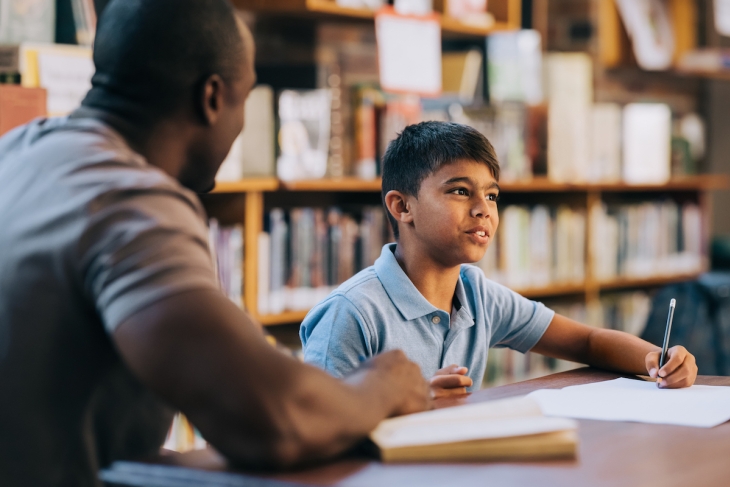Across the country, schools are working to help students recover from pandemic learning losses. A new report, part of the Personalized Learning Initiative from the University of Chicago, examines high-dosage tutoring efforts and aims to provide some up-to-date evidence on how effective they’ve proven thus far.
The data come from four education agencies—three traditional districts and one state department of education—with which Initiative researchers partnered during the 2022–23 school year. These were chosen because they all implemented high-dosage tutoring programs in an effort to follow federal guidance “about how to deploy their ESSER dollars to overcome pandemic learning loss.”
The top-line findings are easily summarized: Tutoring can be implemented at scale and clearly boosts participating students’ end-of-year test scores. The overall impact on math scores is equivalent to about two-thirds of a year of learning, which would be enough to reverse the effects of pandemic learning loss for the average student. Reading test scores are generally positive but far less significant.
Breaking things down further, the analysts find that providing tutoring services during the school day is key to successful implementation. Two of the agencies studied—the New Mexico Public Education Department and an anonymous mid-sized urban district in California—both used out-of-school tutoring in 2022–23, with the former offering online services that could be accessed from home and the latter offering a formal afterschool program. Student participation was low for both programs (the California district didn’t even launch its tutoring until well after the start of the school year), and students who did participate saw minimal improvement in test scores compared to their non-participant peers.
The other two agencies—Chicago Public Schools and Georgia’s Fulton County Schools—focused on tutoring during the school day, and the report presents a detailed analysis of their efforts. Specifically, analysts followed 548 students from Chicago Public Schools and 1,506 students from Fulton County Schools. About half of the group from each school system was randomly assigned to receive high-dosage tutoring in math or reading in addition to classroom instruction, while the other half received classroom instruction only. Among the pooled sample from both districts, 76 percent of students assigned to tutoring participated in at least one session, and the average participating student took part in seventeen sessions. As noted above, data on reading test scores were considered “too noisy” to allow for conclusive evidence of impacts, but indicators were generally positive. Math impacts, however, were strongly positive across the board. The report cites additional factors that aided these outcomes, including having a consistent schedule, deploying well-trained and fully-supported tutors, and using a structured curriculum aligned with the school’s classroom instruction.
The bottom line here: High-dosage tutoring works and is still a powerful weapon to fight learning loss, especially in math. But the authors point out that all four of the education agencies relied on federal ESSER funding to pay for their tutoring programs. With that funding expiring by the end of September 2024, the current school year could be the last for many such programs, despite their demonstrated successes. Unfortunately, they have no recommendations for how to ensure funding support—the question of what happens to pandemic recovery efforts after the “fiscal cliff” is a vital one without clear answer—but their hope is that sharing these promising findings will bolster the case for continuation (and perhaps even expansion) with whatever funding sources can ultimately be found.
SOURCE: University of Chicago Education Lab and MDRC, “Realizing the Promise of High Dosage Tutoring at Scale: Preliminary Evidence for the Field” (March 2024).




